The fight against an ungenerous environment, the preservation of religious and cultural specificities, the passive defence against attacks from the sea – all these have forged a remarkable human landscape that makes Djerba very special. This is the context in which the residents of the island have invented an architecture like no other, one that perfectly fits the island’s landscape: immaculate cupolas, pure arcades, ingenious minarets, and welcoming patios, everything that could seduce the island’s visitors.
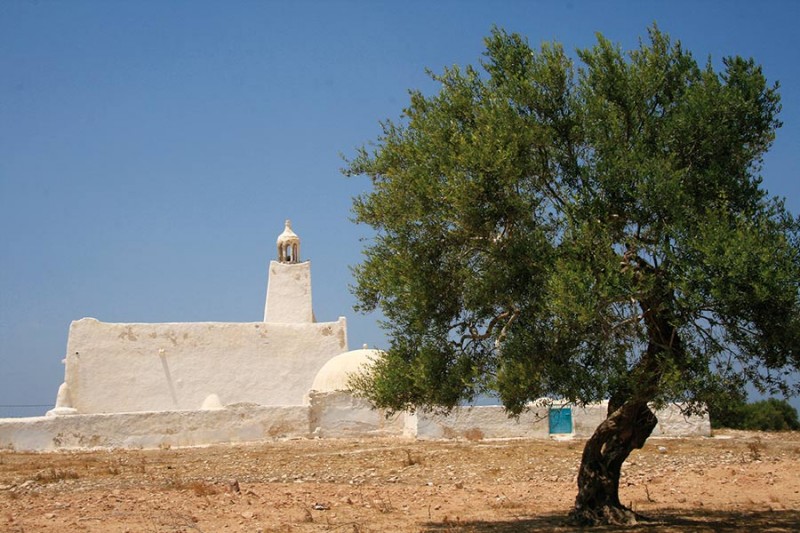
Djerba is an island whose mild climate and poetry-famed landscapes have beguiled visitors from all around the world. It is also a place with an unusual heritage, born of a meeting between a land, a history and a human population.
The land: An arid, sandy, low-lying island of 514 sq. km., just off the south-east coast of Tunisia, washed by the fish-filled waters of the Gulf of Gabѐs.
The history: One of covetous rivalry aroused by this island lying at the heart of the Mediterranean. Those who invaded it rarely penetrated into the interior but often established a foothold on the coast. Examples are the Borj Ghazi Mustapha Fort, where the Spaniards were conquered by the Ottoman privateer Dragut in 1560, or the ruined fortresses of Borj Kastil and Borj Agrab, guarding the sea.
The human occupation: A history marked by the presence of people of two religious minorities – Ibadism, a dissident Islamic movement that shook the Maghreb in the 8th century before it was quelled; and Judaism, present in Tunisia from classical times onward, with a big community existing in Djerba since at least the 11th century, as shown by a document from the Cairo Geniza.
A major Phoenician city existed in Djerba in the age of Carthage: Meninx, whose ruins can still be made out in the south of the island. But there has been nothing like this for many hundred years ; up to the early 20th century there were almost no centres of population. We might mention, however, the Hara, a Jewish town, and nearby Houmt-Souk, whose name means ‘the market area’, and which was exclusively a place of trade and craftsmanship. Foreign merchants found temporary lodging in the fondouks, caravanserais of an immaculate whiteness.
Most people lived scattered around the countryside. The Muslim residents of Djerba usually preferred to live on an outlying farm, the menzel. There the big family house was surrounded by an irrigated garden, with fruit trees and market garden crops. Further off were the dry farmed crops, especially olive groves. Hardly self-sufficient as regards other foodstuffs, Djerba has always produced vast quantities of olive oil.
This system, which restricted irrigated crops to small areas near the farmhouses, was the result of a major natural constraint: scarcity of fresh water. Excessive drawing from wells had little by little made the water brackish; rainwater, thus, stored in enormous tanks buried under the courtyards of the houses, played a vital role.
Like the farms, most of the mosques were scattered around the hinterland. Distant from the houses, they summoned to prayer the residents not of a village but of a whole farming area, known as a ‘district’ (houma).
A feature of the rural mosques and houses in Djerba is their original architecture; the buildings are on a human scale, with robust, pure shapes. This must reflect the Ibadite values of simplicity and the equality of believers.
Who today, looking at these charming rural mosques, would think that they were also designed as a system of defence in times of trouble? Solidly built, with few openings, they could be places of refuge in times of attack.
As well as these inland mosques there were two lines of defence against invasion. On the sea front, sanctuaries named after saints were used to survey the coast. Somewhat further back, a second line of mosques provided safe shelters; some of these were true little fortresses with arrow slits and machicolations; others were built underground and were invisible from a distance.
As well as these Muslim sanctuaries, there is the Great Synagogue of The Ghriba, said to have been founded when the Temple of Solomon was destroyed. It also stands alone in the countryside, not far away from the Jewish village formerly known as the ‘Little Hara’ and now called Erriadh.
The menzels were reached by a network of high-banked tracks that branched out from every mosque, dividing and subdividing as they went. This labyrinth of blind tracks and dead ends foiled many invaders, like the Spanish soldiers who were said to have died of thirst in great numbers in 1510.
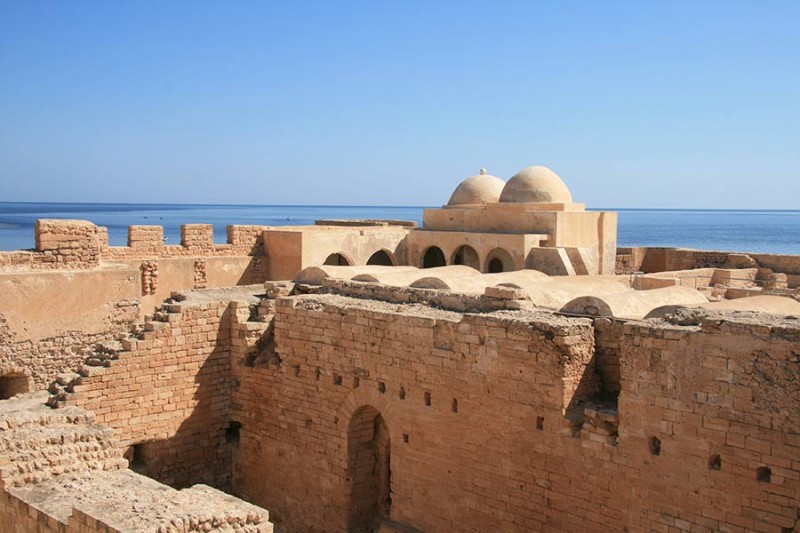
The Borj Ghazi Mustapha Fort was built in 1425 by the Sultan of Tunis, then briefly held by the Spanish in 1560, then recaptured by the privateer Dragut after a siege and a great naval battle between the Spaniards and the Turks. It was named after the governor who was later installed in Djerba, which had become an Ottoman naval base. The building houses a little zaouїa (sanctuary).
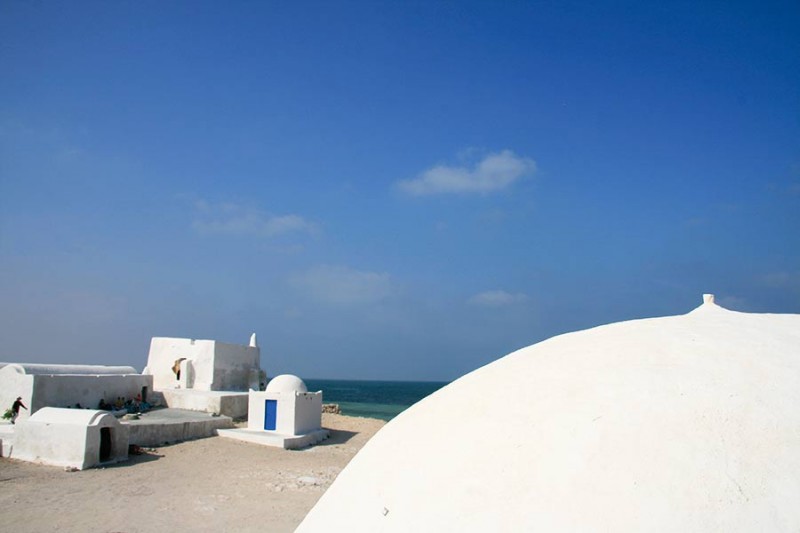
The Sidi Jemour Mosque is one of Djerba’s coastal sanctuaries that keep alive the memory of the holy men whose job it was to monitor the coastline. Nowadays there is a yearly pilgrimage to the mosque. Like most mosques, it gives on to a big esplanade acting as an impluvium where rainwater is caught and stored in an underground cistern.
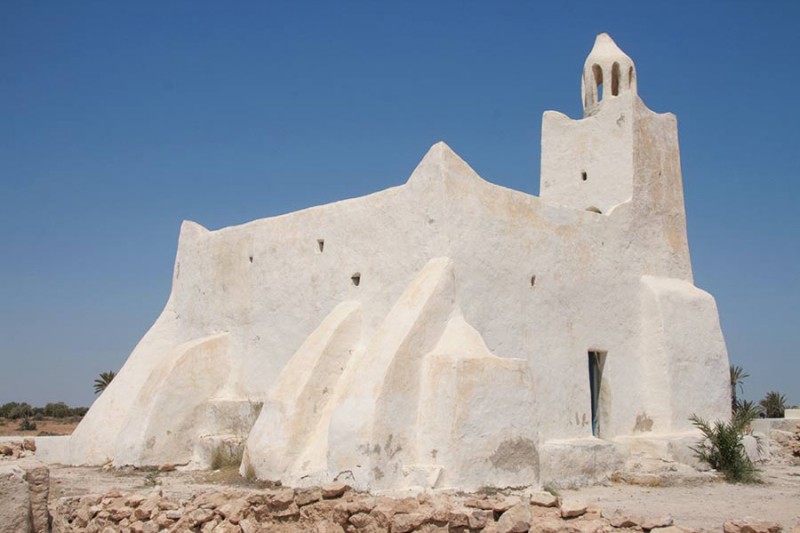
The Moghzel Mosque, visible from far away, stands on a small rise opposite the sea. It was designed to monitor the coastline, and its high blind walls could foil attackers. As in most mosques, the call to prayer was made from a small staircase next to the entrance door. The minaret was used to signal an alert using lights or drums.
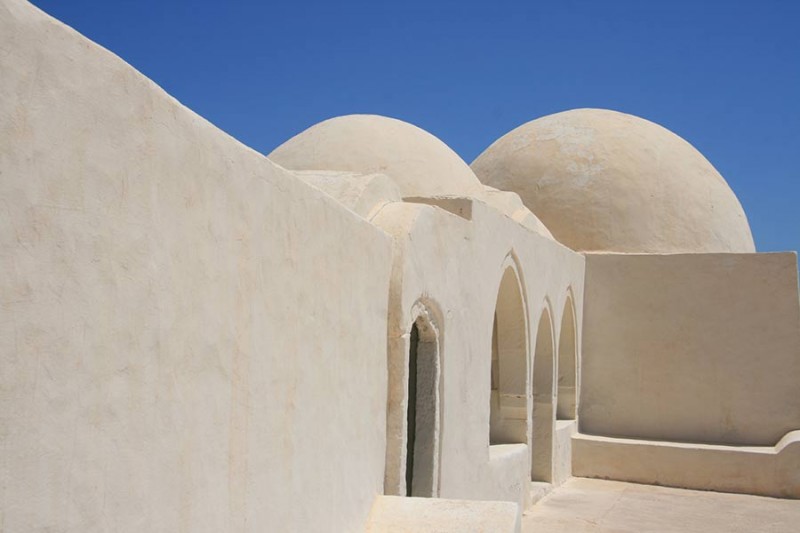
The Fadhloun Mosque, built in the 14th century, is a complex building that provided various services to the community: a school, rooms for grinding and storing grain, and a bread oven. Squat and strengthened by buttresses, it is surrounded by a courtyard in which two mihrabs offer a place for prayer when the heat inside the mosque is overwhelming.
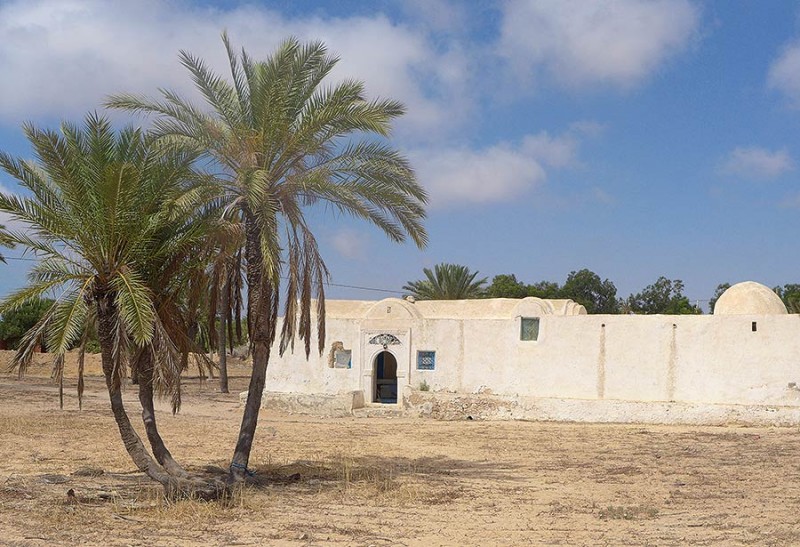
The menzel, a family farm of a type that is typical in Djerba, lay around a big dwelling place with a central courtyard not unlike a fortress, with a high surrounding wall and corner towers – in fact, these enclosed the summer rooms that were better exposed to the nocturnal cool. The family lived there in almost total self-sufficiency thanks to the crops that were suited to the climate.
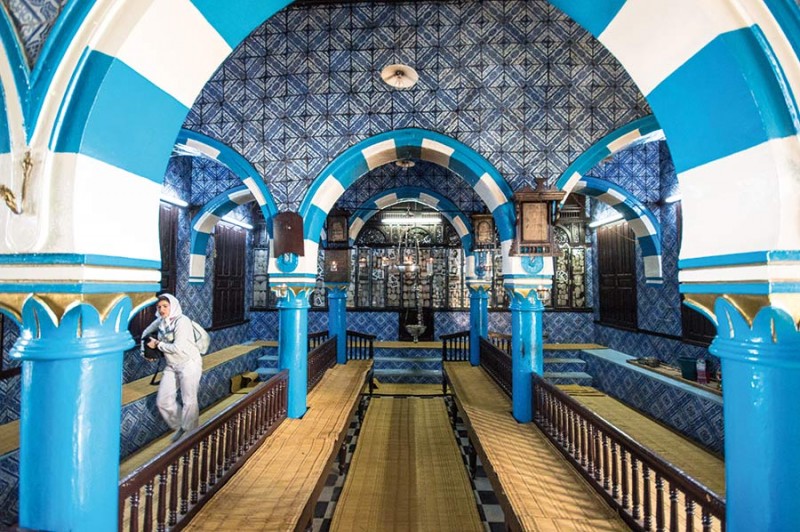
The Ghriba Synagogue is reputedly extremely old, though the present building is recent. The story of its founding is encompassed by a number of legendary narratives. An international pilgrimage is held there that keeps alive the ancestral rituals: the procession behind a grand menorah that calls to mind a wedding cortege, the ritual of eggs presented as an offering, etc.
© G. Mansour, “Tunisia, a universal héritage“, Dad Editions, 2023
To find out more:
What to do, what to see in Djerba and nearby?